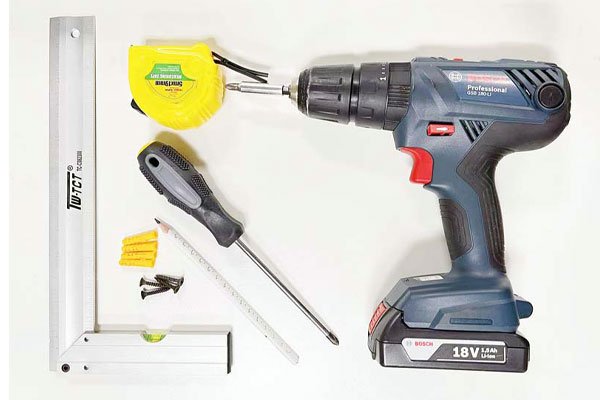Neon signs are a vibrant and eye-catching way to advertise your business, enhance your home decor, or add a unique touch to any space. Their bright, colorful glow attracts attention and creates a lively atmosphere. However, installing neon signs requires careful planning and execution to ensure they operate safely and effectively. In this guide, we will walk you through everything you need to know about neon sign installation, from understanding the components of a neon sign to exploring different installation methods, and considerations to keep in mind during the installation process.
What Are the Components of a Neon Sign?
Before diving into the installation methods, it’s essential to understand the various components that make up a neon sign. Knowing these parts will help you during the installation process and ensure proper handling.
- Glass Tubes: The primary component of a neon sign, these tubes are filled with neon or other gases that glow when electrically charged. The tubes are shaped into letters or designs.
- Electrodes: Attached to both ends of the glass tubes, electrodes are crucial for transferring electrical energy into the gas-filled tubes.
- Transformer: This device converts the electrical current from your power source into the appropriate voltage needed to power the neon sign. It’s vital for ensuring the sign lights up correctly and safely.
- Wiring: High-voltage wiring connects the transformer to the electrodes. Proper insulation and handling of these wires are essential for safety.
- Mounting Hardware: Depending on your installation method, this can include brackets, hooks, screws, and adhesive strips, which secure the sign in place.
- Backing Material: Often made from acrylic, metal, or wood, the backing material supports the glass tubes and gives the sign structure.
Neon Sign Installation Methods
There are several methods to install a neon sign, each suitable for different environments and desired effects. Here, we will explore four common installation methods:
Wall Mounted Installation
Wall-mounted installation is a popular choice for neon signs, whether in a commercial or residential setting. This method provides a stable and prominent display for the sign.
Steps for Wall Mounted Installation:
- Choose the Location: Select a visible spot that can support the sign’s weight and allows for easy wiring.
- Mark the Placement: Use a level and measuring tape to mark where the mounting hardware will go.
- Install Mounting Hardware: Depending on the wall material, drill holes and insert anchors before attaching brackets or hooks.
- Secure the Sign: Carefully attach the sign to the mounting hardware, ensuring it’s level and stable.
- Connect the Wiring: Safely connect the wiring to the transformer and plug it into an outlet.
Hanging or Suspended Installation
Suspended installations are ideal for spaces where wall mounting is not possible or when you want the sign to hang prominently from the ceiling.
Steps for Hanging Installation:
- Choose the Location: Ensure there’s enough clearance and a suitable ceiling structure to support the sign.
- Install Hooks or Chains: Attach sturdy hooks or chains to the ceiling, using anchors if necessary.
- Attach the Sign: Secure the sign to the hooks or chains, making sure it hangs evenly.
- Connect the Wiring: Run the wiring along the chain or through conduit to keep it tidy and safe, then connect to the transformer.
Free Standing or Table Top
Free-standing or table-top neon signs offer flexibility and portability, making them ideal for temporary displays or locations where mounting is impractical.
Steps for Free Standing Installation:
- Select a Stable Surface: Choose a flat, stable surface that can support the sign’s weight.
- Attach the Base: If the sign comes with a base, attach it according to the manufacturer’s instructions.
- Position the Sign: Place the sign on the chosen surface, ensuring it stands securely.
- Connect the Wiring: Plug the wiring into the transformer and connect to an outlet.
Using Adhesive Strips Installation
For lightweight and smaller neon signs, adhesive strips offer a simple and damage-free installation method.
Steps for Adhesive Strips Installation:
- Clean the Surface: Ensure the surface is clean and dry for the adhesive strips to stick properly.
- Apply Adhesive Strips: Attach adhesive strips to the back of the sign or the mounting points.
- Position the Sign: Carefully place the sign on the desired spot, pressing firmly to secure.
- Connect the Wiring: Ensure the wiring is properly connected and plug it into the transformer.
When Installing a Neon Sign, You Should Consider the Following
Installing a neon sign involves more than just choosing the right method. Here are important considerations to keep in mind:
- Location and Visibility: Select a spot where the sign will be most visible to your audience. Ensure it’s at eye level and not obstructed by other objects.
- Electrical Requirements: Verify that the chosen location has access to a suitable power source. Neon signs require a specific voltage, and an electrician may be needed to install the necessary outlets or wiring.
- Weight and Support: Ensure the mounting surface can support the sign’s weight. For larger signs, additional support or professional installation might be necessary.
- Safety Precautions: Handle the glass tubes and wiring with care to avoid breakage or electrical hazards. Follow all manufacturer instructions and consider hiring a professional for complex installations.
- Local Regulations: Check local building codes and regulations regarding neon sign installations. Some areas may have restrictions on the size, brightness, or placement of neon signs.
- Maintenance: Regularly inspect and maintain your neon sign to ensure it remains in good working condition. Clean the tubes and check the wiring and transformer periodically.
Safety Tips for Neon Sign Installation
Safety is paramount when installing neon signs due to the high voltage and fragile components involved. Here are some crucial safety tips:
- Turn Off Power: Always turn off the power before working on the sign’s electrical components.
- Use Proper Insulation: Ensure all wiring is properly insulated to prevent electrical shocks.
- Avoid Moisture: Keep neon signs away from water sources and moisture-prone areas to prevent short circuits.
- Wear Protective Gear: Use gloves and safety glasses to protect yourself from sharp edges and electrical components.
- Follow Manufacturer Guidelines: Adhere to the manufacturer’s instructions for installation and maintenance.
Choosing the Right Neon Sign for Your Space
Selecting the appropriate neon sign for your space involves considering several factors:
- Purpose: Define the primary purpose of the sign, whether for advertising, decoration, or information.
- Size and Scale: Choose a sign that fits the scale of your space. A sign that’s too large or small can look out of place.
- Color and Design: Pick colors and designs that match your brand or decor theme.
- Customization Options: Consider custom signs if you need specific designs or branding elements.
Hiring a Professional Installer
For those who are unsure about handling electrical components or installing large signs, hiring a professional installer can be a wise decision. Professionals have the expertise and tools to ensure a safe and efficient installation.
- Experience: Look for installers with experience in neon sign installations.
- Reviews and References: Check reviews and ask for references to ensure the installer’s reliability.
- Cost Estimates: Get quotes from multiple installers to compare prices and services.
- Warranty and Support: Ensure the installer offers a warranty and post-installation support.
Çözüm
Installing a neon sign can transform your space with vibrant and captivating light. Whether you opt for a wall-mounted, hanging, free-standing, or adhesive-mounted installation, following the proper steps and safety precautions is crucial. Consider the sign’s components, electrical requirements, and location to ensure a successful installation. If in doubt, hiring a professional can provide peace of mind and a flawless finish. With the right approach, your neon sign will shine brightly and enhance your environment for years to come.







Yorum Bırak